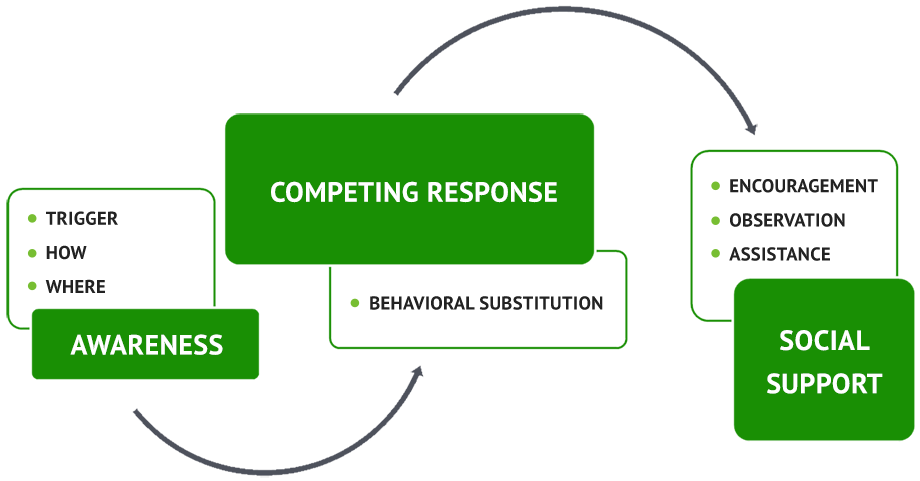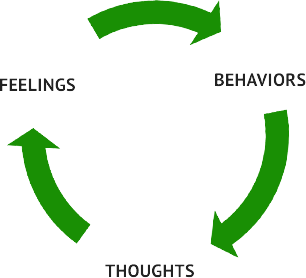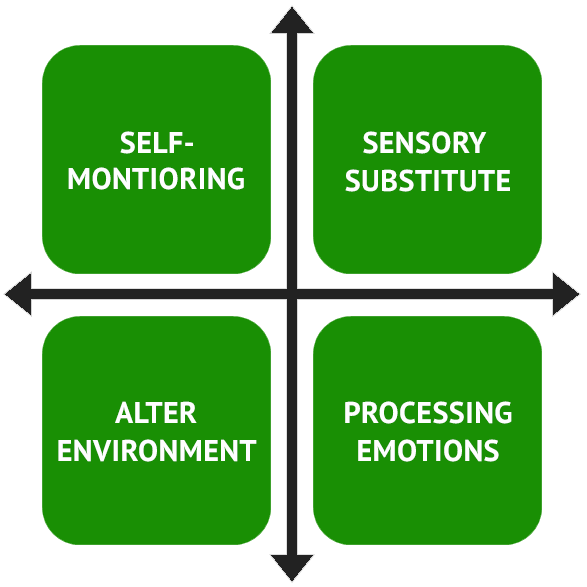Trichotillomania Treatment Options
Trichotillomania is an often-misunderstood mental health disorder. People who suffer from it often go undiagnosed and untreated which makes the physical and emotional effects worse.
Psychological Effects
- Shame
- Embarrassment
- Feeling like a fraud
- Self-loathing
- Feeling alone
- Feeling crazy
- Low self-esteem
- Depression
- Anxiety
- Hypersensitive to the reactions of others
- Hopelessness
- Fear of judgment
Physical Effects
- Bald spots
- Patchy hair
- Inconsistent hair regrowth
- Sparse or missing eyebrows
- Uneven hairline
- Infections
- Blepharitis
Trichotillomania is chronic; however, treatment helps manage the compulsions, impulsivity, and behaviors to help people live free from its powerful grip. Everyone suffering from trichotillomania experiences it differently, therefore, seek treatment from qualified professionals who can help you figure out what will work best for you.
People who struggle with trichotillomania have a high risk of developing other mental health disorders. According to research, 52-60% of those with trichotillomania also have depression and 60% have anxiety. In some people, anxiety and depression can make trich symptoms worse. Therefore, make sure treatment addresses everything because it is all related.
Online Test for Hair Pulling
How Severe is Your Hair Pulling Disorder? Find Out With This Free Online Test
Take the testCategories of treatment
- Medication
- Cognitive Behavioral Therapy
- Habit Reversal Training
- Comprehensive Behavioral Model
- Acceptance and Commitment Therapy
- Hypnosis
- Group Therapy
- Alternative treatments
Medication
First, there is no single medication indicated by the Food and Drug Administration (FDA) for treating trichotillomania. Research suggests some medications can help with impulsivity as well as the depression, anxiety, or stress that often accompanies trichotillomania and makes it worse. Sometimes, reducing the mental and emotional states that trigger pulling behaviors is enough to make a positive difference. However, some of these same medications produce significant side effects that can make pulling behaviors worse.
That said, studies indicate the tricyclic antidepressant Anafranil has yielded positive treatment results, while other studies show inconsistent outcomes. Additionally, other medications such as Prozac and other selective serotonin reuptake inhibitors have exhibited some limited aid, but they produce side effects that may be undesirable.
Approach the use of medication with caution and under the guidance of a trusted health professional who has experience treating patients with body-focused repetitive behaviors like trichotillomania and co-occurring disorders.
Cognitive Behavioral Therapy
The best outcomes for trichotillomania treatment result from psychotherapy. The most common method of psychotherapy, CBT (Cognitive Behavioral Therapy) is considered the leading evidence-based practice for treating compulsive hair pulling.
There are many subtypes of cognitive behavioral therapies. However, one thing they have in common is the underlying assumption about the interrelatedness between thoughts, feelings, and behaviors. In a simplified example, a person could have a thought about being late for work. That thought may inspire a feeling of fear. The feeling of fear then drives the behavior of speeding on the way to work. The process becomes complicated because behaviors, thoughts, and feelings impact each other which can become a chaotic mess. For example, the behavior of pulling out hair could cause a thought such as, “this is not a good behavior” which creates a feeling of shame, but the feeling of shame creates a negative thought that inspires more pulling. A cognitive behavioral therapist can help you sort out the chaotic mess.
The goal of cognitive behavioral therapy coincides with the other underlying assumption that if a thought, feeling, or behavior changes, it will cause changes in the other areas. In therapy, the process includes breaking down the interconnectedness of the thoughts and feelings that lead to pulling behaviors. Then, making small changes in those areas. A simple example is accepting that trichotillomania is a mental disorder, but it does not define the type of person you are. By removing the judgment associated with the thought of hair pulling, the feeling of shame can be corrected by changing one’s thoughts about the condition.
Online Therapy Program
Get guidance and life-changing tools through our online platform and direct support from an expert therapist.
Find freedom from hair pulling through an evidence-based customizable program delivered by an expert Trichotillomania therapist.
Learn moreOur expert therapists will provide comfort, tips and practical techniques to help you and your child cope with the challenges of hair pulling.
Learn more
Habit Reversal Training (HRT)
Habit Reversal Training is a subtype of cognitive behavioral therapy that targets behaviors. Developed in the 1970s, this method of treatment consists of three essential parts:
- Awareness training helps a person recognize patterns in hair pulling behaviors including where it usually happens, how it happens, and identifying the trigger. This is an observational process with the goal of understanding the ideal scenario for hair pulling to take place which informs the kind of therapeutic techniques that will discourage pulling.
- Competing response training is a process where you learn to do something that is not compatible with hair-pulling when you feel the urge to pull. For example, when you feel the urge to pull, making fists with your hands and placing your arms in a locked position would make pulling hair impossible.
- Social support involves the introduction of supportive others into the therapy session so that they can participate. Often, they are instrumental in providing positive feedback, recognizing triggers or behavioral patterns, intervening when you need assistance, or reminding you when the you are in a circumstance where the urge to pull hair can happen.

Outcome research of HRT shows short-term success, but research about the long-term outcomes is limited.
Comprehensive Behavioral Treatment
Comprehensive Behavioral Treatment is a fancy name for combining all existing cognitive behavioral treatment components and customizing them for an individual’s needs.
- During assessment and self-monitoring, the therapist and the individual identify problematic thoughts, feelings, and behaviors that occur before, during, and after hair-pulling incidents to learn about the functionality of the person’s trichotillomania.
- Create sensory substitutes to satiate the urge to pull hair.
- Alter environments where the hair pulling occurs, so it is less convenient and less comfortable for the person to partake in the unwanted behavior.
- Identify and process negative feelings, thoughts, and emotions that typically surround the behavior.
The comprehensive behavioral treatment process is not linear. Instead it addresses each component as needed throughout treatment.
Acceptance and Commitment Therapy (ACT)
Acceptance and Commitment Therapy (ACT) is another form of therapy for trichotillomania treatment. ACT (pronounced ‘act’) is different from CBT because the goal is not to learn how to control thoughts or feelings, but to accept them, especially the unpleasant ones. The therapeutic process includes noticing thoughts, feelings, urges, and unpleasant sensations through observation while learning to experience them and accept them without self-judgment. In therapy, one practices mindfulness to increase awareness and learn to accept the negative feelings they experience. Then, one can choose behaviors that support their values.
For people who pull hair, the goal is to experience the urges associated with pulling, accept the urge, then choose not to act on it. Then, the person can learn that when they experience the negative emotions that surround the act of pulling hair, they can choose not to respond to the urge and not to relieve the negative emotion through pulling.
Hypnosis
While there is not much research to support it, some people experience therapeutic results with hypnosis. Through this process, the hypnotherapist enters the unconscious mind to draw out ways to help them cope with the urges that come with trichotillomania. This method could be successful in discovering and dealing with traumatic events or incidences of stress that could have initially triggered the beginning of the hair pulling behaviors.
Group Therapy
For those who want to figure out how to stop hair pulling, yet do not want to go through treatment alone, group therapy is a viable alternative. Group therapy can also supplement individual therapy by providing social support. Group therapy and their less formal counterparts, support groups, offer several benefits:
- A place to freely be oneself
- Not feeling alone
- Increased sense of belonging
- Decrease shame and embarrassment
- Learn from the experience of others
- Help support others by sharing one’s experience
Alternative Methods
While behavioral therapies are well-documented, evidence-based ways to treat trichotillomania, there are several alternatives or holistic methods that exist as viable options. Use caution with alternative therapies. The research regarding the effectiveness of these therapies is mixed. Consult with your healthcare provider because some herbs, supplements, and treatments can interfere with medication, or can increase the severity of symptoms.
- Aloe vera
- Applied topically with gel from a plant or commercially available products.
- Thought to calm physical sensations on the skin that can trigger hair pulling.
- Chamomile tea
- Drinking the tea creates an overall calming effect.
- Soothing anxiety or stress reduces the urge to pull hair.
- Kava Kava
- Supplements or capsules commercially available or chew on the leaves.
- The plant contains natural calming properties that can reduce the urge to pull hair.
- Marjoram leaves
- Chew the leaves.
- Calms nerves, especially during times of shock or grief.
- Provides relief to trich sufferers who developed the disorder as a coping mechanism for stress.
- Aromatherapy
- Various oils can serve as a therapeutic remedy.
- People who pull eyebrows or eyelashes should avoid oils because they can be harmful to the eyes.
- Inositol
- Dietary supplement, considered a B vitamin.
- Naturally found in cantaloupe, oranges, nuts, beans, high bran content cereal.
- Helps stabilize mood, reduce stress and anxiety which reduces the urge to pull.
- N-acetylcysteine (NAC)
- Natural amino acid (L-cysteine) supplement
- Moderates over-action in the brain
- One research study showed clinical effectiveness for reducing pull behaviors



Coping with Trichotillomania
Every person who suffers from trichotillomania experiences it differently, therefore, treatment must be individualized and comprehensive in a way that addresses the physical, psychological, and emotional aspects of the disorder. Regardless of the treatment intervention used, one of the most significant steps of the overall treatment process is learning how to deal with the disorder. There are many ways to cope yet the process contains these aspects:
- Awareness
- Learn to recognize the behavioral and physical signs that accompany hair pulling. This step is crucial for people who pull their hair without realizing they are doing it.
- There are many ways to increase awareness, and it takes time. Enlist the help of a therapist or a supportive person.
- Increased awareness can help determine if hair pulling relates to another issue such as chronic depression.
- Acceptance
- Understand that compulsive hair pulling is a problem. It is a mental health disorder.
- Even though the behaviors are a problem, it is not your fault.
- Trich does not define you.
- Education
- Learn what trichotillomania is and what may be causing it.
- Investigate treatment options.
- Read about or listen to others who manage pulling behaviors.
- Teach others. Many people do not understand trich. By educating others, you not only reduce internal stigma, but you help reduce external stigma which helps you and others.
- Change your language
- Practice person-first language. Instead of referring to yourself as a “hair puller” consider separating the behavior from your identity by saying “someone who has trich.”
- Person-first language empowers. Instead of the behavior having control over you, research suggests practicing person-first language enables a person to feel more in control of the behaviors.
- Engage supportive others
- Coping with trich alone tends to make symptoms worse.
- Engage family or close friends for support.
- Enlist the help of your healthcare provider.
- Remain in contact with a qualified therapist.
- Join a support group.
Dealing with Relapses
Trichotillomania is a chronic condition, meaning it lasts a lifetime and there is no cure. The goal of treatment is to manage the behaviors, so they do not interfere with what you want to do. It takes awareness, perseverance, and resilience to learn to manage the disorder. As good as treatment can be, it is not perfect, and sometimes, the behaviors come roaring back vigorously. When they do, it is often referred to as a relapse. However, let’s start by reframing “relapse.”
The word itself connotes dread, fear, judgment, or failure. The dictionary definition does not inspire confidence either.
Relapse - suffer a deterioration after a period of improvement
Contrast “suffering a deterioration” with the definition of lapse.
Lapse - to pass gradually into an inferior state or condition
How would you like to refer to a setback? Language means a lot because it conveys attitude and meaning. When someone with asthma experiences an acute asthma attack, they are not accused of a relapse. Therefore, people making lifestyle changes to manage a hair pulling disorder do not deserve that label either. Change is hard. Sometimes life gets hard, and setbacks happen. Lapses happen. Get back up and move forward.
- Lapse Prevention
- Expect and plan for lapses.
- They are going to happen. If you expect them in advance, it will not be shocking.
- Identify triggers and high-risk situations which could contribute to a lapse.
- Talk with your therapist or supportive others about what to do in case of a lapse.
- Resist the urge to judge yourself. This is not a failure; it is a setback.
- Healthy lifestyle
- Be prepared. Have your competing responses or grounding tools with you.
- Take care of yourself and live a balanced lifestyle with healthy diet and exercise.
- Maintain low-stress levels and practice pre-emptive self-care.
- Establish routines, create stimulus controls and competing responses.
- Maintain social support to help you recognize triggers or early warning signs.
- Support someone else which can help you focus on practicing good coping skills.
- Expect and plan for lapses.
- Dealing with a lapse
- Be GENTLE! Resist the urge to scold or beat yourself up. Stop negative self-talk and replace it with positive.
- Re-engage.
- Go back to basics and practice the problem-solving techniques used early in treatment.
- Go back to a therapist or a support group if you have been away for a while.
- Re-employ self-management skills.
- Evaluate.
- Thoroughly and objectively discuss what happened with a therapist or supportive other.
- Learn from the lapse. Identify the triggers and create new plans for dealing with it in the future.
As life goes on, as people age, as environments change, there will be new triggers and new ideas to cope with them. Treatment for trichotillomania is a lifelong process unique to every individual, but awareness, education, learning skills, social support, and perseverance create the foundation for success.
